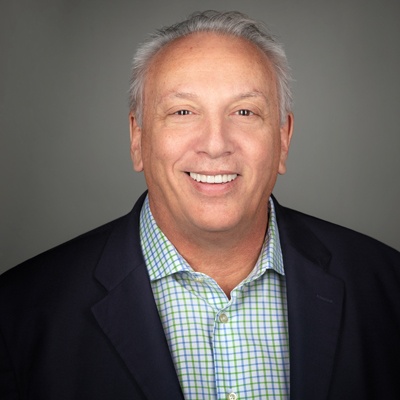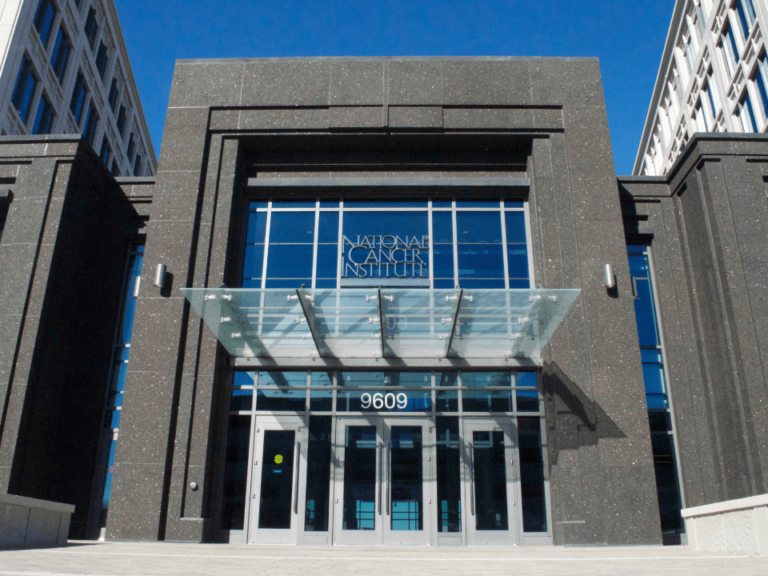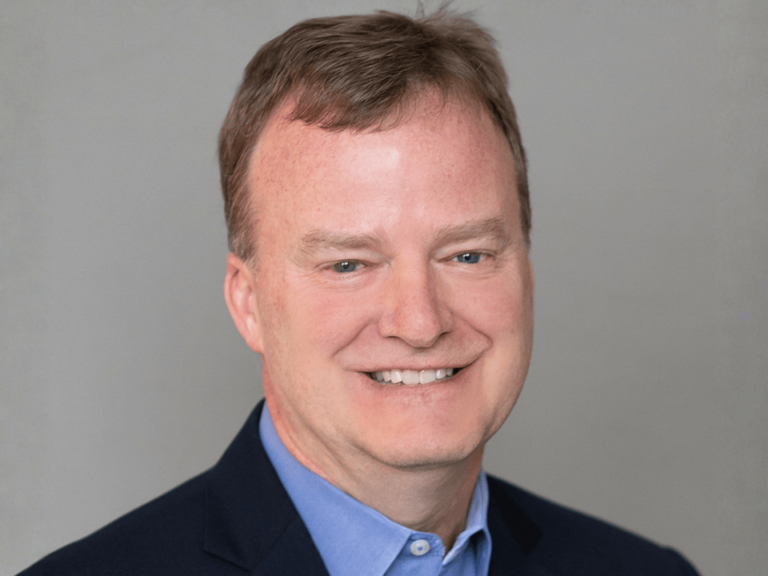

Director & CEO, University of New Mexico Comprehensive Cancer Center;
Distinguished Professor of Pathology and Internal Medicine, The Maurice and Marguerite Liberman Distinguished Endowed Chair in Cancer Research, UNM School of Medicine
One of my concerns about the data is that it is a mix of NCI (61) and non-NCI centers (17). I am convinced from my own personal knowledge of the NCI centers, that if you looked solely at the NCI centers—this diversity data would be significantly worse. I think the survey data is skewed by the inclusion of non-NCI centers and if we looked solely at those, there would be far less diversity in race/ethnicity and sex among directors/associate directors.
For instance, this story reports that 15.4% of the center directors are “women”—but the percentage of women directors at NCI centers is significantly lower than that and is actually decreasing.
Over the past three years, several new NCI center directors have been appointed, and to my knowledge, only one was a woman (Lerman; Neili Ulrich took Mary Beckerle’s place at Utah) and only a very few are minorities. This is a great disappointment to me.
Currently there are only nine women directors of the NCI Cancer Centers (Willman – UNM; Ulrich – Utah; Lerman – USC; LeBeau – U Chicago; Glimcher – Harvard; Johnson – RPCI; Knudsen – Sidney Kimmel/Jefferson; Sweasy – Arizona; Pietenpol – Vanderbilt).
Of these, one is retiring (LeBeau) and a new director is being recruited. That would bring us to only eight permanent women directors. This is a significant concern to me. I also believe that the proportion of associate directors who are racial/ethnic minorities at the NCI centers is far lower than reported here.
I think the NCORP data is really interesting. It obviously reflects a more diverse leadership profile. But I also believe those cancer centers are located in regions of the United States with large minority and underserved populations, and I hope what it speaks to is the commitment of those institutions to hire diverse leaders to reflect the populations that they serve.
Diversity, inclusion, and equity are essential in leadership and in the conduct of science. Our patients want “people who look like me.” The conduct of cancer science is full of often “well-meaning,” but unconscious and conscious bias.
We set national rules and policies (for biospecimen collection, data sharing, and the development of data narratives) that too often do not respect the sovereignty of Tribal Nations and/or the cultures and beliefs of underserved, diverse, and minority populations making them feel unsafe or not respected or protected.
A majority of our human clinical and translational investigation and cancer clinical trials are predominantly conducted in non-Hispanic white individuals—fostering or leading to conclusions that are not generalizable to a more diverse population.
Current highly restrictive eligibility criteria for most cancer clinical trials restrict minority individuals from clinical trial enrollment, due to significantly higher co-morbidities. This is definitely on the NCI radar, but is a problem we have not solved.
At the University of New Mexico Cancer Center, currently 72% of our trainees are diverse scholars—race/ethnicity, gender, and sexual orientation. While we have not achieved these levels of inclusion in our faculty and leadership ranks at the cancer center and within our institution, we are committed to doing so. We now restrict the appointment of internal faculty to leadership roles, requiring national searches that meet diversity inclusion criteria.
We require all search committees to undergo implicit bias training and to develop pools of candidates that are diverse. We also believe it is absolutely essential to develop early-stage pipeline programs and have focused intently on engaging high school and undergraduate students in cancer science—the diversity of which exceeds 65%. In our region, many of our trainees are Hispanic, American Indian, or other minorities.


Director, Cancer Center at Illinois;
Founder Professor of Engineering, Department of Bioengineering, University of Illinois Urbana-Champaign
We are a new cancer center, and we are carefully considering some of these issues. So, this study is a good means to know the current landscape.
There are some natural challenges in society and in science that are also reflected in our cancer communities. Then, there are some unusual challenges, based on the type cancer center and its location. This data is a great start, but there are further underlying factors that I can think of. For example, geographic location might affect the composition of a cancer center leadership.
In some ways, this report is reassuring in that there’s progress in the composition of the cancer centers’ leadership across the country. There’s more work, obviously, to be done, but the diverse composition of many institutions is heartening. The good composition of women and people of color in leadership by some institutions offers hope and models. It can be done in this community.
In particular, many of our members come from an engineering background. We are still addressing parity of representation of women in engineering, and there is much more work to be done in increasing participation of underrepresented minorities. Many of the minority representation trends serve to emphasize the a need to develop the entire pipeline.
An unexpected finding for me was the relative lack of representation of Asian Americans among the directors and other senior leaders of cancer centers. While there seem to be larger numbers of oncologists and medical experts from this group, senior leaders are fewer. The disparity in numbers between the NCI-designated and those that are not was also interesting, though smaller numbers may have disproportionate effects.
An interesting correlation to consider is the academic backgrounds of cancer center leaders. Biology has obviously made much more strides in including women and other groups, and that may be reflected in the compositions of more biological and medically-focused cancer centers. It does seem to me, at least in those fields, there’s a more diverse representation. To me, it was heartening at some level. It is now more important than ever to think of diversity.
There is a transformative change happening right now in the world—with more information, better models of things, precise care, detection, and personalized approaches. That’s the way the world is going and the field will go. If we’re not diverse enough, we will lose the opportunity to learn something from the differences of backgrounds and experiences among us. Those differences might hold the key to actually developing new approaches for everyone. We also need to think of diversity of disciplines.
Perhaps an interesting future survey would be to understand how many with engineering, artificial intelligence and process management backgrounds are amongst us. Almost every industry has shown that these disciplines can bring about greater value and deliver a better experience for the customer. Maybe it is time to explicitly bring these disciplines into our community.
For our community in the cancer center world, it is very important to have the best minds, regardless of background, regardless of color, regardless of socioeconomic status. If we’re not putting the best minds together—we will not be able to deliver better care at lower cost. The future of society depends on that paradigm being realized soon. And if we don’t include the best talent, if somebody is left out because of the color of their skin, or because of their beliefs, or whatever, then that’s not progressing against what society needs today. To me, that’s a very critical element.
We take diversity very seriously in the Cancer Center at Illinois. I lead all our efforts to make sure we are considering diversity in all our efforts. We have appointed a chief diversity officer from amongst our staff. There’s a person who focuses on all processes in the cancer center, being examined, to make sure that they’re equitable and they include everyone.
For example, we are focusing on expanding the role of women in our CC leadership. We instituted a focused leadership program for early mid-career members of the cancer center. These are all very accomplished members, and we’re going to put them through a year-long set of activities that expose them to the different facets of a cancer center operations and strategy. It puts them on the fast track to take on some leadership roles, scientifically—whether it’s training grants or it’s program projects. We feel that by homegrowing the talent, we will have a very solid foundation for many years into the future.
The biggest next step is that we don’t let up. All the cancer center directors that I know and all the senior leaders in every cancer center that I know are incredibly wise and aware of the value of people. They are well aware of the benefits of maintaining a highly diverse cancer center and leadership, and so on.
However, we can’t let this issue sort of slide into the background with the multitude of challenges that we’re facing now. Not the least of which is the COVID pandemic, and certainly many other challenges that existed before COVID, and which just got exacerbated now with COVID-19.
As a community, I believe, we will maintain our focus on this issue and continue to move forward. As a community, we have to take a moment to celebrate that we have come far, and recognize that we need to go further. It is important to appreciate the progress that’s been made, while at the same time having a clear-eyed-view of what it will take to continue to move us forward.
Those, to me, are the biggest takeaways in our community at this point—from the survey.
Finally, I want to congratulate The Cancer Letter for taking on this exercise. The data is very valuable, and helps us benchmark to make sure that we maintain excellence with diversity.


Director, Virginia Commonwealth University Massey Cancer Center
I’m really excited about the data presented. I think this is a very good first effort at trying to get our arms around something that’s not always been easy to do. My enthusiasm is very high for this report.
I think, however, that the report still needs a little more granularity—while there is evidence of some diversity in our cancer centers, where is the diversity coming from? For example, is the diversity coming from the 71 NCI-designated cancer centers, or from the non-designated cancer centers?
It would also be good to know, in what positions does the diversity exist? Often, when we talk about diversity, for example, in most of our medical schools, the diversity is typically the dean of diversity, or chief diversity officer positions, as opposed to the dean of admissions, or the dean of a college.
What is the diversity we have amongst our associate directors? What positions do they hold? Are our underrepresented minority and women associate directors, associate directors of basic science, clinical research, population science, or community outreach and engagement/health disparity?
It would also be important to compare the number of diverse cancer center directors and the deputy directors in NCI-designated versus the non-designated cancer centers. That’s an important thing to look at, because of the 71 cancer center directors, I am currently the only African American. I hope that changes soon. I think that this is an important step to get a better grip on the work we need to do to increase the diversity at our cancer centers. This current report is an important first step in addressing this issue.
It’s important to point out that where there are NCORP sites, you tend to have more diversity, as shown in the report.
There are two interesting points that are alarming from the report. The negative trend in the number of African Americans in leadership positions is troubling. Moreover, and even more alarmingly are the incredibly low numbers of Native Americans who are active in our cancer centers.
The report also gives some validity to the importance of diversity among cancer center leaders. For example, it appears that women cancer center directors have a bit more insight into their pipelines than their male colleagues—in a sense, having the insight to recognize that, while they felt they were doing okay in developing diverse pipelines, there was still more to be done.
We know that diversity, inherently, is a good thing, and that the health field tends to lag behind the business world. The business world figured out decades ago that diversity in leadership matters and was simply just good business practice. We’ve had studies by Carnegie Mellon and others that have confirmed this finding. When you bring more diverse voices to the table, you actually strengthen the organization more than you weaken it.
I’m a firm believer that bringing diversity to the table is essential.
Since my start at the VCU Massey cancer center, I recognized that we did not have a chief diversity officer. I know that chief diversity officers are typically associated with medical departments, and colleges, but I think the time has come to expand this to all matrix as well as free standing cancer centers.
I think we could do a much better job in executing and implementing diversity programs by having a chief diversity officer in our cancer centers. As such, we’ve opened up a national search here at VCU Massey for a chief diversity officer.
I’m very excited about having a chief diversity officer to assist me in overseeing issues around fairness in our search processes, equity in our research and clinical trials etc.—the position will have both the resources and authority to make a real impact on our cancer center practices. I’m pretty excited about our future.
For there to be more diversity in oncology, we’re going to have to do better in attracting folks into the field. The low number of African Americans, Latino/Latinx, Pacific Islanders, and Native Americans in our field is a call to action. The report clearly points out the lack of diversity among these groups. The report also points out the tremendous need to increase gender diversity as well in our cancer center leadership and rank and file members.
We’ll never be able to attract diverse people into our field if those people feel excluded from the start. We have to better cultivate young people to want to take care of our cancer patients, and to advance the field of oncology through high impact research. We are at a crossroads right now, and getting it right, by which I mean, improving diversity in our cancer centers matters now more than ever.


Director, Yale Cancer Center;
Physician-in-chief, Smilow Cancer Hospital
The data shared by The Cancer Letter highlighting the lack of diversity and gender inequality in oncology leadership positions is disappointing and underscores the importance of redoubling our efforts to recruit and mentor diverse faculty and staff at our leading cancer centers.
This is a priority for our cancer center and the focus of our Diversity, Equity and Inclusion Taskforce. We are committed to expanding diversity across all areas of our center, including our leadership team. Our scientific pursuits and academic missions will profoundly benefit from the increased diversity achieved at all levels of research, education, outreach, and patient care.


Center director and executive vice president, Moffitt Cancer Center & Research Institute
First, cancer centers that have diversity in the topmost position at a center have superior levels of leadership diversity in their organizations. This is especially true of centers led by women directors.
Second, there appears to be inclusion bias inherent in center directors who are white men, who perceive their leadership pipeline as diverse when in fact they are less diverse. This underscores the need for inclusion bias training across the board.
Finally, initiatives to increase diversity via targeted recruitment, effective mentoring and retention, and successful promotion should be considered across all centers, along with a continuous review process that ensure such initiatives reach and sustain desired milestones.
Maximizing the impact of cancer research to all of the diverse populations in our local communities, in our states and across the nation goes hand-in-hand with enhancing the diversity of leadership. Including individuals from different backgrounds and life experiences facilitates informed and creative solutions to prevent, treat and cure cancer.
Moffitt’s diversity efforts are designed to span all team members at our center. First, our Office of Institutional Diversity is focused on ensuring that cultural humility and inclusivity are infused into every component of our center, including our interactions with our patients. This is accomplished through purposeful recruitment, training and retention of minority team members, as well as through training in inclusion bias and racial equity and by providing language services.


Associate center director, Community Outreach, Engagement & Equity, Moffitt Cancer Center & Research Institute
Second, our Office of Community Outreach, Engagement, and Equity ensures that our scientific vision and direction are set in collaboration with our community through ongoing partnerships that were established well over a decade ago.
Finally, our Office of Research Education and Training ensures that diversity is considered from the very earliest part of the cancer training pipeline beginning with K-12 students, graduate trainees, post docs, and extending to faculty across all levels. We emphasize both mentorship and sponsorship across all levels and support targeted initiatives to recruit and retain Black faculty trough the Faculty Diversity in Oncology Program.
While each group has had longstanding initiatives focused on diversity, this moment in time has emphasized the need for unity in our efforts. Thus, these teams now work more than ever in a coordinated fashion to ensure that every aspect of the institution includes a focus on diversity and inclusion. We have done a deep dive on our own efforts to recruit, retain, and support diverse faculty at the Center. Based on this assessment we are creating targeted goals in these areas.
We have also formalized an Office of Minority Accrual to Clinical Trials, to expand the reach of our research and trials into all of our community. Finally, our Community Outreach and Engagement facilitates ongoing involvement of our community to ensure that equity is foundational to setting the direction of our center.
As shown by your findings, while we have made progress, we have a long way to go.
First, at a foundational level we need to be much more self-aware, and do a deep dive on the diversity landscape of our centers, our patients, and the communities that we all serve. Figure out where the gaps and needs are and develop action plans that fully address them.
Second, establish metrics that ensure accountability in improving diversity in leadership. To move the needle on this critical issue, we need to be purposeful and deliberate in engaging appropriate leaders, and to establish clear benchmarks of success. And we need to provide the necessary resources to pull it off.
Finally, as center directors we need to lead by example and show that diversity and Inclusion matter deeply to each and every one of us. We need to make this very personal, and be deeply engaged in the outreach to the vulnerable populations in our communities, and to make this an expectation for all of our deputy and associate directors, program leaders, and eventually all faculty, such that diversity and inclusion become part of our DNA—no longer initiatives but the new normal.


Director, The Ohio State University Comprehensive Cancer Center, Kathleen Wellenreiter Klotz Chair in Cancer Research, Arthur G. James Cancer Hospital & Richard J. Solove Research Institute
Probably the most important takeaway from the data is that although we are making progress, we have a long way to go. This is particularly the case in the realm of underrepresented minority leadership. We are doing much better with breaking down the glass ceiling on behalf of our female oncology colleagues, but are still lacking regarding other groups. We need to be active and redouble our efforts, including expanding the training and faculty career trajectory pipelines to enable improved representation in this regard.
Diversity is critical, because no one group has a lock or monopoly on the badly needed new ideas. This is the life blood on scientific discovery, and we can choose to ignore this reality at the ultimate price of cancer disease control needed by all of our patients.
We have very active working relationships with high schools located in medically underserved neighborhoods in Columbus as well as strong connectivity with historically Black colleges and universities throughout the state of Ohio, our NCI-designated catchment area. Students are placed in OSUCCC member led research laboratories where cancer research projects are pursued. The students are tracked going forward, and are actively encouraged to apply to medical school or graduate school. A very high record of matriculation has resulted.
These efforts require modest outlays of resources, pay bona fide dividends, and the ROI can be observed downstream; the long term view will ultimately carry the day!


Director, UNC Lineberger Comprehensive Cancer Center;
Distinguished Professor, Lineberger Professor of Cancer Research;
Director, UNC Cancer Care, University of North Carolina at Chapel Hill
We are all underperforming. With the exception of centers with associated NCORPs, I’m not sure that the data on the directors’ race and gender, with respect to assembling a diverse staff, are what we would call “clinically significant.” My guess is that within-group variation may be as large, or larger, than between-group differences. That’s not an excuse for white male directors. It’s just that we are all not doing enough.
Clearly, the lived experiences of different people can and should make a huge difference in the design and execution of population, public health, implementation, early detection, and clinical and translational research. We are missing key knowledge on 35% of our cancer patients. We are incorporating basic scientists more and more into collaborative efforts. The lived experience of minority basic scientists should contribute to the goals and objectives of team science. Their perspective also enriches training and adds new ideas to whatever we do.
Male-dominated societies have failed to take advantage of half of humanity for virtually all recorded history until the last 75 years. This is changing somewhat, as indicated by this year’s data, with women playing an increasing, yet still not equivalent, role in cancer center leadership. (Although COVID 19 is presenting unequal challenges for all working women).
A greater level of inclusion could bring all of humanity, not just part of it, to bear on the world’s problems.
Our center has a long history of discovery, analysis and definition of minority disparities in our state. We are proud of our findings in this area and our forays into intervention and implementation. With the enduring problems so starkly revealed by recent events, however, as well as the health and economic toll of COVID on minority populations, we clearly have only scratched the surface.
Our center has set up a high-level Equity Council which has begun to meet; its goal is not to “provide a “report”, but to develop a path forward with metrics, a five-year plan, some specific targets for cancer center investment, and a mechanism for monitoring our responsiveness.
A cancer center can’t solve all the problems of structural racism but it can concentrate on: improving timely clinical care of minority populations; increasing minority accrual to clinical trials; assuring staff equity and advancement; training a well-supported and well-mentored next generation of minority scientists; recruiting a larger cohort of minority and female faculty across population, clinical and basic sciences; and enhancing an atmosphere that feels and is inclusive.
All of us need to figure out how to sustain the passion of the moment.


Director, Cold Spring Harbor Laboratory Cancer Center;
Roy J. Zuckerberg Professor, Chief Scientist, The Lustgarten Foundation, Cold Spring Harbor Laboratory;
President-elect, American Association for Cancer Research
There is a disproportionate over-representation of white males in cancer center leadership positions, relative to the numbers entering medical school today—this is likely multifactorial and implicit and explicit biases may factor into this trend. However, since most leaders went to medical school in 1970-1985, you might include the metrics on what the representation of women and minorities were then, to give a more balanced view rather than the 2019 medical school applicants.
[See all benchmark data here.]
Diversity encourages different fields of view and may support an overall stronger working environment for research by promoting inclusivity and equality.
We started an Education and Diversity program at our cancer center, to begin to address the diversity issue head on. The new deputy director leading this is African-Caribbean, and brings unique perspective to this topic. Also, I have a fabulous Nigerian student in my lab who has just accepted a faculty position to start his own group at the Whitehead Institute. He has told me that he never envisioned himself in this position since very few people at our cancer center look like him.
I am trying to take his perspective to heart and make changes that encourage more diverse individuals to join our cancer center at all levels, since all I want is for cancer to be scared of us, rather than a potential cancer warrior to be concerned of a lack of people like themselves as the reason for not entering cancer science and cancer medicine. I have much to learn about this topic and hope to see my appreciation of this grow quickly.
You have started by measuring the parameters about diversity and the workforce in cancer centers. It is now for the readers to decide what should be done with this information, and this will likely and appropriately include a call to increase female and minority leadership positions in cancer centers.
Diversity, Equality and Equity are now common concepts that many are espousing following the continuous violence against African Americans, and these issues may be related to health disparities amongst African Americans, Latino/Hispanics, and Native Americans. I think the AACR report of a call to action on this topic also is a good start, and you might want to link it to your article. [The Cancer Letter, Sept. 25, Sept. 18, 2020]


Executive director, Winship Cancer Institute of Emory University;
Associate vice president, cancer, Woodruf f Health Sciences Center;
Lawrence W. Davis Chair of Radiation Oncology, Emory University School of Medicine
There is an opportunity at many cancer centers to better understand the value of a diverse leadership group. It’s certainly important for us at Winship, as well as across Emory University.
This survey gives us a great body of data, and it will be interesting to see—with many diversity initiatives going on across cancer centers, universities, and other institutions—what such a survey will look like in five or 10 years. It was also interesting to see the distribution of the cancer center directors among physicians, physician scientists, and scientists and also among their cancer disease site of specialization.
What this tells me is that there’s a rich diversity of leadership across our cancer centers. I do think there’s an opportunity for us to be more intentional in terms of how we select associate directors, deputy directors, and other leadership roles. These leaders often become the directors of the future. We also must be clear on defining the roles for each of them, as well. It would be ideal if cancer centers reflect the demographics of their communities. Leadership should, at the very least, reflect the demographics of the scientific and medical communities that they lead.
If you have a given subset, a category of people, with lots of the mid-career physicians and scientists in that category, and they’re also not represented in leadership—then that’s an issue. Gender, race, and ethnicity are important, but also the leader’s specialty or sub-specialty expertise. Cancer research inquiry is strengthened by a diverse leadership team.
I think, whether it’s conscious or unconscious, for every one of us, our behaviors and our opinions reflect our background. So, I think our centers are better, the community of cancer research leadership is better, if as many possible backgrounds are reflected in leadership. My experiences as a white male have been different in my lifetime than the experiences of someone from a different group, and so having a diversity of experiences in a leadership group is important.
Emory University has made diversity a priority, and we reflect that principle in Winship. We have strong gender diversity among many Winship leadership teams, but we have more opportunity. We in Atlanta reside in the cradle of the civil rights and we’re in the large state with a large black community, and this provides us with both the opportunity and responsibility to have significant representation of underserved minorities among our physicians and leaders. And we’ve done some of that, but we have opportunities. We’re not satisfied where we are.
We address the issues of diversity in two major ways. One is to ensure that we provide exceptional access to all members of our communities for cancer care, exceptional cancer care, and cancer research. And the other is to ensure that our providers and researchers reflect the demographics of the community.
I think most outstanding cancer centers do a better job with the former rather than the latter, and that is true here at Winship. We have enrollment in our trials that reflects the demographics of the community. We have extraordinary providers who reflect the demographics of our community, but we have opportunities in the leadership of our center to reflect our community better, and we are committed to this.
It is difficult to identify a challenge unless you can measure it, and I think your report helps us measure diversity in cancer leader leadership. I was surprised that the relatively low number of associate and deputy directors across cancer centers who are of Asian descent. At our institution, that’s a fairly high number, but every center is different. I think we must seek out a diverse population of candidates for these positions. Sometimes that may mean looking beyond the usual places. Sometimes it means looking to other nations and institutions that don’t involve simply naming the person we know down the hall.
We must also reach out to our communities. Winship investigators have several grants which support science opportunities to middle school girls, high school students, and college students at historically black colleges and universities. Winship also has a community advisory board that advises us on other initiatives.
As someone who was a middle school science teacher in a rural racially diverse public school myself prior to medical school, I’m certainly sensitive to the opportunities that our community provides us.











